Story by Reuters •

A PIKE Energy crew makes repairs after ice storms and freezing rain in the south of Texas left thousands without power and turned roadways into ice rinks during an extreme cold weather period in San Antonio, Texas, U.S., February 2, 2023.
(Reuters) -More than half of the U.S. and parts of Canada, home to around 180 million people, could fall short of electricity during extreme cold again this winter due to lacking natural gas infrastructure, the North American Electric Reliability Corp (NERC) said on Wednesday.
In its 2023-24 winter outlook, the regulatory authority warned that prolonged, wide-area cold snaps threaten the reliability of bulk power generation and availability of fuel supplies for natural gas-fired generation.
"Recent extreme cold weather events have shown that energy delivery disruptions can have devastating consequences for electric and gas consumers in impacted areas," NERC said.
It put the U.S. Midwest, Northeast, Mid-Atlantic, and South, along with some Canadian provinces, at the highest risk for electricity supply shortages this winter.
Grid operators like Midcontinent ISO, PJM Interconnection, SERC Reliability Corp and Texas' ERCOT are vulnerable to generators going offline under extreme cold conditions, NERC said, adding that cold weather could also choke off gas pipelines in New England that has limited gas infrastructure.
"There is not enough natural gas pipeline and infrastructure to serve all the gas generation in certain big areas like PJM, MISO, New York, and New England," John Moura, NERC's director for reliability assessment and performance analysis, said during a media briefing.
NERC also found that load forecasting in winter is growing in complexity, and underestimating demand is a risk to reliability in extreme cold temperatures.
NERC, along with the Federal Energy Regulatory Commission, on Tuesday urged lawmakers to fill a regulatory blind spot to maintain a reliable supply of gas during extreme cold that was highlighted by an inquiry into power outages during Winter Storm Elliott in December 2022.
During Elliott, both electric and gas systems in much of the eastern half of the U.S. experienced significant stress, resulting in unplanned generation losses, with around 90,500 megawatts out at the same time, the inquiry found.
Flows of gas into pipelines were reduced during Elliott, while demand for the fuel for heating and power generation increased, dramatically lowering line pressures. That gas system only narrowly avoided significant outages.
In New York City, Consolidated Edison declared an emergency because it faced a system collapse that would have taken "many months" to restore service in the middle of the winter.
(Reporting by Anjana Anil and Deep Vakil in Bengaluru; additional reporting by Scott DiSavino in New York; Editing by Leslie Adler and Marguerita Choy)
Can we count on renewable energy? Four ways wind, solar and water can power the US
Kate S. Petersen, USA TODAY
Updated Tue, November 7, 2023
In February 2021, the electric grid failed in Texas.
A particularly brutal winter storm system had struck the state and, as temperatures plunged, millions of people were without power or heat for days. Pipes burst, flooding homes. Water treatment facilities went offline. Hundreds of people died.
"People were literally burning furniture inside their house for heat," Selena Xie, president of the Austin EMS Association, told USA TODAY.
Politicians and other public figures were quick to blame the tragedy on renewable power.
"It never would have been an issue had our grid not been so deeply penetrated by renewable energy sources that contribute the least when they are needed the most," Texas Public Policy Foundation, a state think tank, said in a statement.
These claims echoed a widespread belief seen in mainstream political discourse and social media chatter that replacing “reliable” fossil fuel power sources with “unreliable” renewable power technologies will inevitably lead to catastrophe.
However, renewables were unfairly blamed for the disaster in Texas. While wind facilities did underperform or fail, the outage was primarily caused by the failure of natural gas infrastructure and supply chains, experts said.
Claims that renewables are intrinsically unreliable are also off base. Renewable energy sources are necessary to reduce CO2 emissions from the electric grid and the escalating harms caused by global warming, and with proper planning grids can increase use of these resources without sacrificing reliability, experts told USA TODAY.
“The truth of it is every resource has its own unique characteristics to plan for,” said Trieu Mai, a researcher in the Grid Planning and Analysis Center at the National Renewable Energy Laboratory. “There is no intrinsic reason why a renewables-based grid would be more prone to blackouts. But it does require planners to account for the characteristics of those renewables when they do their planning.”
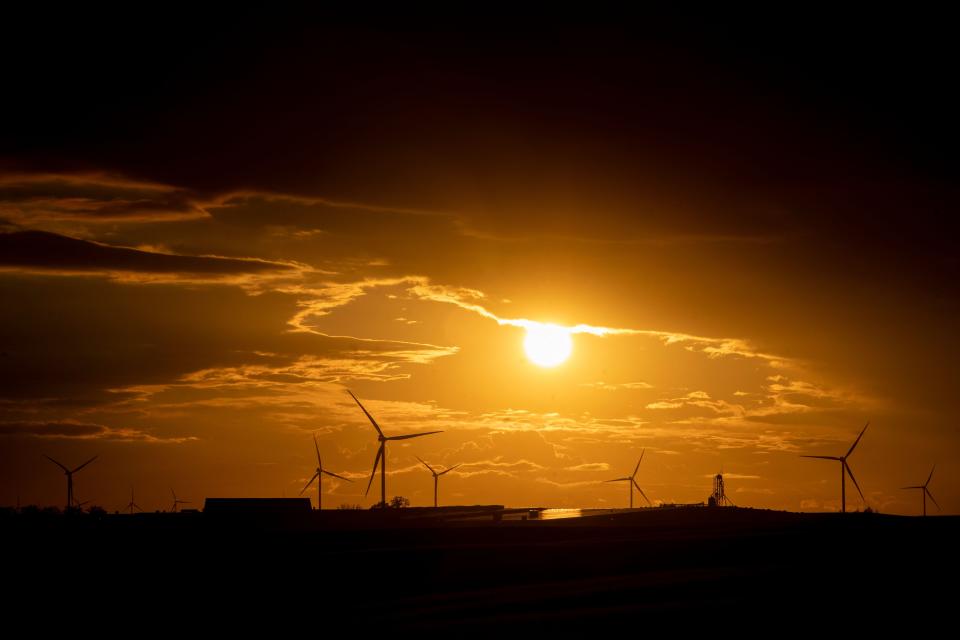
Shifting to more renewable sources, such as wind and solar, can be done without sacrificing reliability, experts said. Credit: STEFANI REYNOLDS, AFP via Getty Images
Can renewable energy replace fossil fuels?
To deal with the intermittent nature of some renewables, grid planners have a variety of strategies in mind:
Storing power to be used later
Transmitting power over distance
Creating resource diversity with different types of renewables
Using “demand response” initiatives to encourage consumers to use power when it is plentiful
For an electric grid to work properly, operators must make sure that power supply meets power demand instantly – managing random fluctuations in consumer use and the typical peaks and troughs of the day or year.
Renewables like solar or wind that fluctuate with weather add another layer of complication. Some fluctuations are predictable − such as solar power production increasing as the sun rises and peaking in the afternoon − but others are less so.
“Renewable generation could swing rapidly and suddenly within a region due to cloud coverage or wind speed or direction changes,” said Andy Sun, a Massachusetts Institute of Technology electric power systems professor.
Storage: Save power until it's needed
One option for managing these fluctuations is to store energy that is produced when power is plentiful and use it when power becomes scarce. This strategy functionally transforms "intermittent" renewable power into "dispatchable power" − meaning the power is guaranteed to be available for a given time, even if the weather is bad.
Giant lithium-ion batteries – the variety found in electric cars and cell phones – are being rapidly deployed for this purpose. The most common utility-scale lithium-ion battery stores power for about four hours, enough to push through, for instance, an evening peak demand period after solar plants have largely stopped producing, according to Mai.
“In the longer term … you might need to shift it further than four hours,” he said. “What we see in our analysis is an increasing duration of energy storage needed as you significantly increase renewables on the grid.”
Other technologies can store power for longer and require less intensively mined minerals than batteries. For instance, pumped storage hydropower has been used for energy storage for decades, according to Robert Armstrong, chair of the Massachusetts Institute of Technology Energy Initiative's 2022 report, "The Future of Energy Storage."
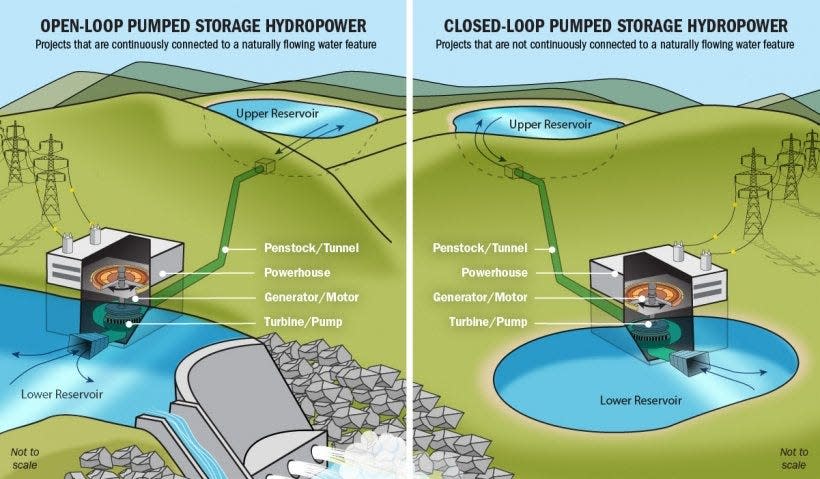
Pumped storage hydropower can store power for many hours depending on the size of the facility.
In this system, excess energy produced during peak production periods – such as mid-afternoon on a solar-driven grid – is used to pump water up an incline to a reservoir. When energy is needed, the water is released to flow back downhill, creating electricity by spinning a turbine.
These facilities can store many hours' worth of energy depending on their size.
Other energy storage strategies, which are in varying stages of research and development, include:
Thermal energy storage – A material, such as sand, is heated with excess power and then stored. When needed, the hot material is used to pressurize a gas, which then spins a turbine.
Alternative chemistry batteries – Alternative materials are used to construct a battery that stores power for longer or more cheaply than traditional lithium-ion batteries.
Gravity storage – Something heavy, such as sand or blocks of concrete, is lifted when energy is plentiful and then dropped during times of need, creating power through regenerative braking. Researchers have proposed repurposing existing mines for this type of storage.
Compressed air storage – Excess power is used to pump and compress air in underground chambers, which is released to spin a turbine when needed.
Hydrogen fuel – Excess renewable energy is used to split hydrogen from water, which can then be transformed into electricity by a fuel cell.
Transmission: Move power to where it's needed
Another option to fill the gaps on cloudy days or windless nights is importing renewable power from elsewhere via electrical transmission lines, according to Mark Jacobson, a professor of civil and environmental engineering at Stanford University.
"When the wind is not blowing in one place, it is often blowing somewhere else, and vice versa," he told USA TODAY in an email.
Currently, the U.S. electric grid is divided into three broad sections that operate almost independently of each other and differ in renewable resource distribution and abundance. Connecting the eastern and western parts through increased transmission capacity could help the U.S. make better use of its abundant renewable resources, according to a 2021 study led by the National Renewable Energy Laboratory.
For instance, these improvements would allow excess solar power from the Southwest to support Eastern communities during peak demand, according to the Department of Energy. Likewise, Midwestern wind power could be sent in the opposite direction as the sun sets on the West Coast.
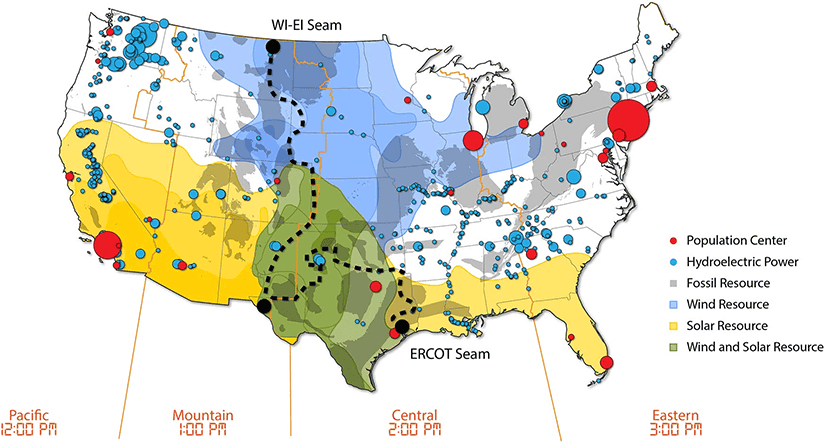
Renewable resource distribution and abundance vary across the U.S. Connecting different regions could allow excess resources to be shared across the country, experts said. Map is from the 2021 National Renewable Energy Laboratory led SEAM Study which analyzed the impacts of connecting two major parts of the U.S. electric grid. Red dots = Top 25 population centers, Blue dots = hydroelectric facilities, Blue shading = areas with greatest wind resource, Yellow shading = areas with greatest solar resource, Green shading = areas with wind and solar resources WI = Western Interconnection, EI = Eastern Interconnection, ERCOT = Electric Reliability Council of TexasMore
Large interconnected grids allow "resources of different types – meaning solar, geothermal, hydropower and various storage technologies – to work together," Mai said.
Resource diversity: Leverage complementary renewables
This sort of resource coordination, or resource diversity, is itself an important strategy for keeping the lights on. For wind and solar energy specifically, grid operators can take advantage of a convenient characteristic that allows them to be used in tandem.
"Wind and solar, which are both ... intermittent resources, are complementary in nature," Jacobson said. "When the sun is not shining, the wind is often blowing ... and vice versa. Thus, combining wind and solar on the grid smooths out the overall electricity supply over time."
Planners can take advantage of this quality by coordinating wind and solar across the U.S., within a specific region, or even within the same power plant, Caitlyn Clark, a National Renewable Energy Laboratory researcher and co-author of a 2022 hybrid power plant study, told USA TODAY.
Including other types of renewables brings additional benefits.
For instance, both hydropower and geothermal power can offer dispatchable power to the grid, which may reduce the need for storage in areas where these resources are available. And geothermal technologies can also reduce the amount of demand on the electric grid by providing direct heating and cooling in buildings, Amanda Kolker, the geothermal energy laboratory program manager at the National Renewable Energy Laboratory, told USA TODAY.
Demand response: Incentives for using less power when renewables are producing less
Reducing demand, or at least moving demand around in time, is yet another key strategy for managing a renewables-dominated grid, experts say. This can be accomplished with demand response initiatives, which provide incentives for consumers to reduce power consumption during times of peak demand.
This can help shift demand to better coincide with peak wind and solar energy production.
"Right now our mindset is, 'There's demand for power out there and we have to create an electric grid to serve it,'" Jim Robb, CEO of North American Electric Reliability Corporation, an electric grid regulatory authority, told USA TODAY. "Another way to think about this problem is ... 'How do we shape the demand curve to take advantage of what the system naturally wants to produce?'”
Such programs have already been deployed to avoid blackouts on fossil fuel-dominated grids. For example, one Texas utility remotely accesses the thermostats of program participants and adjusts them by 2 to 4 degrees to reduce community power usage during peak demand or extreme weather. The participants receive financial compensation and can override the adjustments manually if they choose.
A 2021 study found incentive-driven demand response programs have the potential to reduce the power needed during Texas summer and winter peak demand by 19,000 megawatts. That's about the same amount of electricity that would be generated during peak demand by 10 or 11 recently proposed new gas power plants, according to a press release for the study.

Demand response programs can reduce strain on the grid when renewable power is less abundant.
Is it possible to power the grid with 100% renewables?
Wind, solar, hydropower and geothermal energy produced about 20% of U.S. power in 2022. Researchers say that, through the right combination of the available strategies (tailored to different geographic areas), significantly higher levels are attainable in the near term.
This is true even when accounting for the increasing demand associated with electrifying other sectors of the economy, such as transportation.
Multiple research groups have proposed models of renewables-dominated systems. For example, Jacobson and his colleagues modeled a grid that would run on 100% solar, wind, hydroelectric, geothermal, tidal and wave power and storage by 2050.
Mai and other researchers modeled various scenarios where a combination of wind, solar, hydropower and storage could contribute up to 95% of electricity by 2035, with fossil fuels and nuclear making up much of the rest.
However, he said including nuclear and fossil fuels in this mix doesn't mean those power sources are intrinsically necessary to “back up” a renewables-driven grid, as some have claimed.
“When we do our research over what a 100% renewable or low-carbon grid would look like, we often find lots of solutions that we think may work,” Mai said. “There are really no pure technical challenges where if you hit ‘X’ percent (renewables), it can't be done. Or at least we have not found such a case."
Being smart about grid design
The speed at which a reliable grid driven by 100% renewable power – or close to it – can be built out isn’t just a technological question, Mai said. Political will, economics, supply chain strength, policy decisions and planning decisions very much determine how quickly the future low-carbon grid can be constructed and how reliable it will be.
And careful planning that accounts for all the variables is key.
For instance, substantial new transmission infrastructure will be necessary to build out a reliable renewables-driven grid, Mai said. However, permitting for new transmission lines is difficult, and some proposed transmission projects (as well as some solar and wind projects) have met resistance due to social, cultural, ecological and wildlife impacts.
This conflict has created tension around the future of the grid, but Jacobson said the amount of transmission necessary to support reliability is somewhat flexible. Additional storage could make up for less-than-ideal transmission infrastructure.
Smart transmission technologies and advanced conducting materials can also help reduce the amount of new transmission needed by allowing planners to use existing transmission infrastructure more efficiently, according to Brad Klein, an attorney at the Environmental Law and Policy Center, who co-authored the center’s 2021 report on the subject.
For example, the amount of power that can be sent through a given transmission line is determined by weather and temperature, but planners currently limit the amount of transmitted power based on conservative worst-case weather conditions, Klein said. Smart dynamic line rating technology can be used to quickly adjust the amount of power flowing through wires based on real-time weather data − allowing more power flow when conditions are ideal.
While new transmission projects may take a long time to be built, smart grid tech can be deployed now to make the existing grid better equipped to disperse renewable power, according to Klein.
“It's a way to do things better, cheaper, faster and with less environmental impact and less controversy and less land use dispute,” he said. Additionally, smart tech deployment would let the “new transmission facilities we build operate more efficiently, so we can ‘right size’ the amount of new transmission we need and avoid overbuilding.”
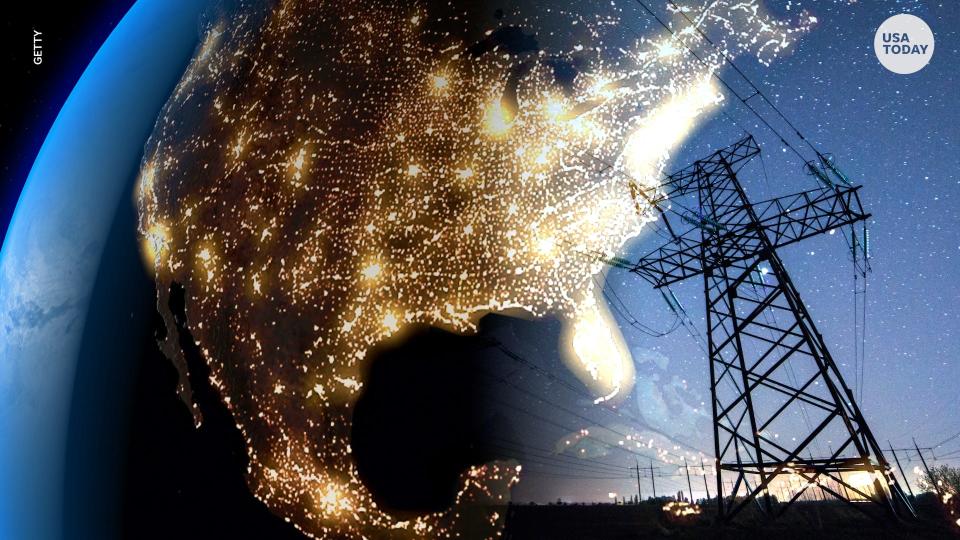
Smart technology can help integrate renewables into the U.S. electric grid more quickly and efficiently, experts said.
Whatever the balance of transmission, storage and other strategies ends up being implemented, a grid dominated by wind and solar must also use new techniques to deal with electrical disturbances such as faults or grid frequency fluctuations, Robb said.
Currently, mechanical components in gas, coal, nuclear, hydropower and geothermal plants help the grid adjust when there is a disturbance, but solar and wind power plants lack these components.
To maintain reliability, replacement technologies that can help grid operators respond to problems must be widely incorporated into wind and solar plants or elsewhere on the grid before too many coal and gas plants go offline, according to Robb.
“The way I describe it is that we inherited our grandfather's electric system,” he said. "We're going to create an electric system we're going to leave for our grandchildren. And it's going to be very, very different.”
This article originally appeared on USA TODAY: Renewable energy sources can produce 24/7 power. Here's how
Wed, November 8, 2023
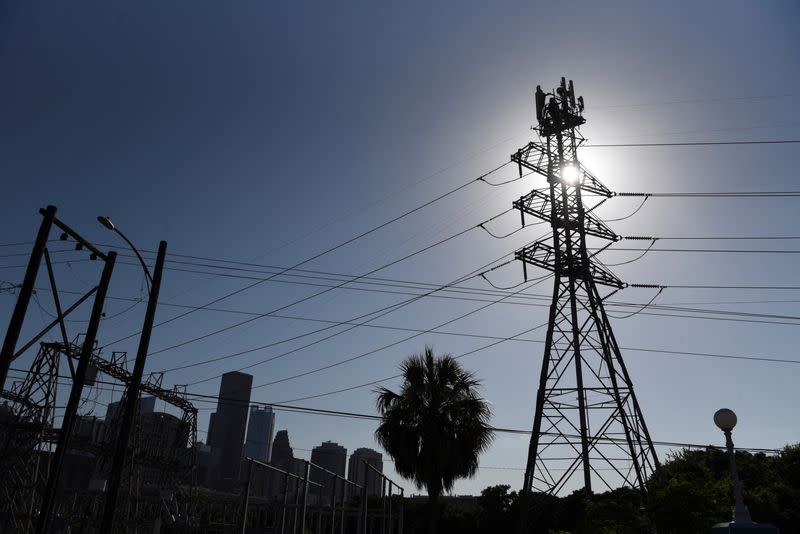
People react to a period of hot weather in Houston
By Nicole Jao
NEW YORK (Reuters) - Texas voters passed a constitutional amendment to create a $10 billion energy fund that aims to improve the reliability of power-generating infrastructures in the state.
The fund would go toward financing construction of new power-generating facilities and maintenance of existing infrastructure. Some 1.6 million voters, or 64.9%, favored the proposal titled Proposition 7 in the Nov. 7 constitutional amendment election.
The proposal is one of several efforts by lawmakers and regulators in Texas to avoid another energy crisis like Winter Storm Uri in February 2021 that left millions without power, water and heat for days.
Texas Energy Fund will be administered by the Public Utility Commission of Texas (PUCT) to provide lower interest loans and incentives to make the state's grid more reliable.
"Ever since Winter Storm Uri, Texas legislators and the PUCT have prioritized incentives for more dispatchable generation, with a primary focus on natural gas-fired power plants," said Winston Skinner, counsel at Vinson & Elkins.
"The Texas Energy Fund represents a very significant step towards that goal of new steel in the ground," said Skinner.
The bulk of the funds, $7.2 billion, will go into building and upgrading power-generating facilities in the ERCOT (Electric Reliability Council of Texas) region.
Another $1.8 billion will go to support the development of backup power sources for facilities in the state.
The rest of the funds will go to enhancing the reliability of transmission, distribution and power generation facilities outside of the ERCOT region.
(Reporting by Nicole Jao; Editing by David Gregorio)
Texas voters approve amendment putting billions toward gas power plants
Rachel Frazin
Wed, November 8, 2023

Texas voters on Tuesday decided to put billions of dollars into natural gas power plants as part of an effort aimed at increasing the reliability of the state’s electric grid.
The creation of the Texas Energy Fund was approved in a 65-35 vote with more than 95 percent of the votes having been counted. The New York Times has called the race, saying the amendment has passed.
The fund will make $7.2 billion in low-interest loans available for the construction of gas-fueled power plants, as well as completion bonuses for that construction and repairs to existing plants in areas controlled by grid operator ERCOT.
It will also put an additional $1.8 billion into backup power and $1 billion in grants for power infrastructure outside of the jurisdiction of ERCOT, which covers most of the state.
Proponents of the amendment say it will make the state’s grid more reliable, particularly in the wake of a 2021 winter storm that knocked out the power and killed hundreds of people.
However, opponents expressed concerns about the amendment’s climate change implications, arguing that the state shouldn’t be putting more money into planet-warming fossil fuels.
Texas voters gave retired teachers raises and approved new infrastructure funds as most constitutional amendments passed
Karen Brooks Harper
Tue, November 7, 2023

Property tax cuts, a raise for retired teachers and billions in investments in infrastructure, research, tech and energy have been approved by voters Tuesday night.
Voters weighed 14 constitutional amendments on the ballot, but Proposition 13 which would have allowed judges to retire at a later age was rejected, with barely over one-third of Texans voting for it.
And a few others — including a property tax exemption for biomedical inventory and equipment from property taxes and one to eliminate Galveston County's treasurer position, were passing by only slim margins.
The most definitive support went to Prop 4, the $18 billion property tax relief measure, which had 83% of the vote.
As of 9 a.m. Wednesday, the unofficial results and race calls from Decision Desk HQ include ballots cast in early voting and all election day polling locations. At least 99% of votes have been counted for all 14 amendment races, according to estimates from the Decision Desk HQ turnout model.
Texans Vote in Favor of Billions for Fossil Fuels, Leaving Out Renewables as an Option
Angely Mercado
Wed, November 8, 2023
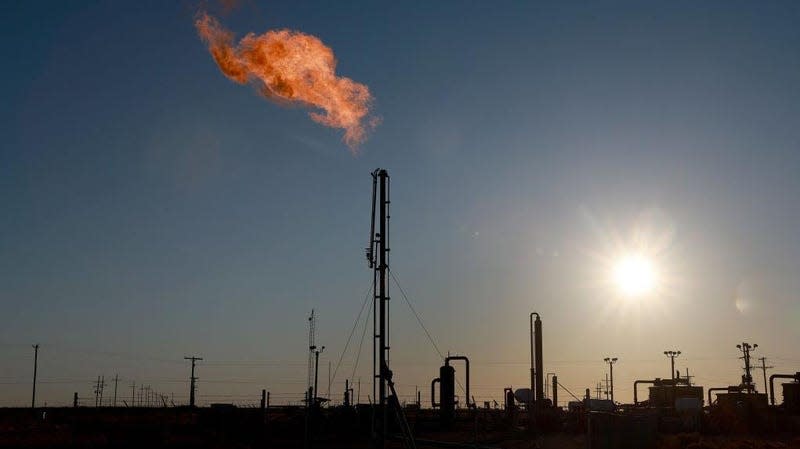
Natural gas is flared off during an oil drilling operation in the Permian Basin oil field on March 12, 2022 in Midland, Texas.
The votes are in, and Texans overwhelmingly voted “yes” for Proposition 7, which will funnel billions of dollars to fund fossil fuel power plants instead of turning to renewables to back up the state’s fragile electrical grid. The proposition will allow the creation of a $10 billion energy fund, none of which can go to wind, solar, or battery storage.
More than 64% of eligible Texas voters voted in favor of Proposition 7, according to a report from The New York Times Wednesday. The proposition authorizes the Public Utility Commission of Texas to create the “Texas Energy Fund,” which will provide 3% interest loans for constructing power plants that can generate more than 100 megawatts. The fund will total approximately $10 billion, and more than $7 billion of the money will go towards the loans and completion grants.
Environmental groups in the state are concerned that funneling billions towards loans and grants for power plants will undermine the role of renewable energy as a more reliable backup for extreme conditions. Sourcing natural gas also releases a ton of methane into the atmosphere. Even though this greenhouse gas doesn’t stick around for as long as carbon dioxide, it is 80 times more potent than carbon dioxide over a two-decade period.
Activists and environmental experts said that they will continue to support legislation that will expand renewable energy sources, even though Texas elected officials don’t seem as likely to do so. Luke Metzger, the executive director of Environment Texas, said that he was disappointed but not surprised by the vote.
”The ballot language refers to funding ‘electric generating facilities’ but doesn’t say wind, solar, and batteries are excluded, which polls show are among the most popular sources of energy,” he said in an email to Earther Wednesday. “The Legislature has chosen to put their thumb on the scale for methane gas power plants (the only energy source likely to benefit from this fund), which is the wrong direction for our climate.”
Dave Cortez, the director of the Sierra Club Lone Star Chapter, said that the proposition was “pro-fossil fuel industry” but not “pro-Texan.”
“Our grid instability is real,” he said in an online statement. “But Prop 7, which offers up to $10 billion of taxpayer money to private corporations for the construction of new, polluting gas plants at the exclusion of more sustainable solutions only props up an energy source that is responsible for the most power outages in winter and contributes to rapid warming and record-breaking heat waves.”
Yesterday’s vote did, however, lead to some environmental wins for the state. Texans overwhelmingly voted yes for Proposition 6, which creates a fund to update the state’s water infrastructure and mitigate water loss, the Texas Tribune reported. About 76% of Texans also voted in favor of Proposition 14, which creates a fund for improving and creating state parks.
Tue, November 7, 2023
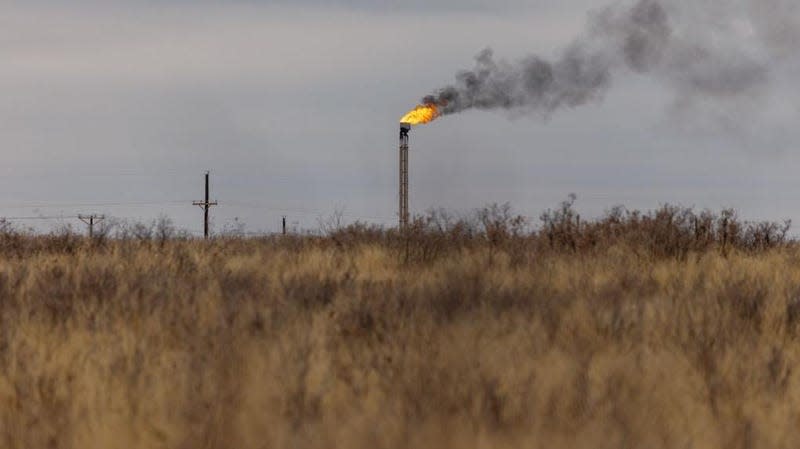
A natural gas flare stack at an oil well in Midland, Texas on April 4, 2022.
Texas will vote on whether to give the oil and gas industry billions to make its barely-working power grid more reliable while ignoring the benefits of renewable energy. This comes two years after a winter storm shut off power for millions of Texans, and a heat wave this past summer that pushed the power grid to its limits.
Texans will weigh in on Proposition 7 Tuesday, which is a constitutional amendment that if passed will give the state’s utility regulator the authority to give low-interest loans to either upgrade or build new natural gas power plants. These gas plants are intended to support Texas’ often faulty grid especially during extreme weather events.
Environmental groups outright oppose Prop 7. The Sierra Club explained that the language in the proposition downplays that “fossil fuel infrastructure was heavily to blame for the power outages during Winter Storm Uri,” in a statement from last month.
Another major concern from environmental groups comes from the source of natural gas. Sourcing natural gas releases methane into the atmosphere, which is a greenhouse gas 80 times more potent than carbon dioxide over a two-decade period. This will only contribute to the climate-related emergencies such as major storms and the sky-high temperatures that caused Texas’ grid to reach record usage multiple times this past summer.
“Our grid challenges in Texas are not the fault of solar and wind,” the Sierra Club’s statement said. “Our electricity demand is being fueled in large part by extreme temperatures driven by climate change–a slew of new gas plants will only make this problem worse.”
Luke Metzger, the executive director of Environment Texas, thinks that the painful memories from the 2021 storm are being weaponized so that Texans can be on board with more fossil fuel subsidies.
“Voters reading that will think ‘oh, this will help the grid. I’m still scared from Uri’” Metzger told Earther in a call. “There’s far better ways to spend $10 billion to boost reliability, including energy efficiency investments and batteries which are excluded from this program.”
Metzger also worries that this could drown out the progress that the state has made in producing renewable energy, which he said will be more cost-effective in the long run. Despite being a solid red state governed by fossil fuel-loving Greg Abbott, renewables are doing extremely well there. A study released earlier this year found that the U.S. saw impressive growth in wind and solar energy capacity, but Texas led the country in wind energy production. The state also came in second for solar energy production.
“I think [Prop 7] will have a deflating impact on that,” Metzger said. “If you are building new gas plants, that’s going to mean less demands for renewables that we might otherwise have seen.”
Gizmodo
Proposition 7 aims to make Texas electric grid more reliable
Tue, November 7, 2023

AUSTIN (Nexstar) — Texans will vote on a proposition that would create funding to increase “reliability” for Texas’ electric grid in the Nov. 7 constitutional amendment election.
Texas Proposition 7, originating from S.J.R. 93, would create the Texas Energy Fund, which would support and finance the “construction, maintenance, and modernization of electric generating facilities.”
Turnout tracker: How many people have voted in the November 2023 election?
Background
Proposition 7 comes after power grid challenges experienced most notably during winter storms in the past years.
Pablo Vegas, president and CEO of ERCOT, emphasized the grid has become more “volatile” given the current resources.
“The complexities of managing a growing demand, and a very dynamic load environment with those types of resources becomes more and more challenging,” Vegas said Tuesday during a meeting of the ERCOT board of directors.
Vegas said one solution to overcome the challenge is investing in power production that is available on demand, like power plants fueled by natural gas. Those plants can help during times when the need for electricity strains the supply.
“With the passing of Proposition 7 on the ballot this November, we’ll see those incentives combined to incentivize a more balanced development strategy going forward,” Vegas told board members.
Why Texas’ constitutional amendment elections historically have low voter turnout
If Proposition 7 is passed by voters, it would enact S.B. 2627, which establishes an advisory committee to oversee the fund and the various projects it could be used for. $5 billion would be transferred from the General Revenue Fund to the Texas Energy Fund if Proposition 7 passes.
Opposition for Proposition 7 comes from the Lone Star chapter of the Sierra Club, an environmental organization based in Austin. Cyrus Reed, conservation director of the Lone Star chapter, said the Texas energy fund is slated to benefit private utilities to build gas plants using taxpayer’s money.
“That fundamentally is putting a risk on taxpayers,” Reed said. “What happens if one of these plants gets built and then doesn’t make enough money?”
Reed emphasized that there are better alternatives than Proposition 7 to better the current energy system.
“We were big advocates for increasing the amount of money spent on energy efficiency and demand response programs,” Reed said. “Programs that actually help consumers save energy in their homes, apartments or businesses.”
Texans will be able to vote on various constitutional amendments, such as Proposition 7, in the Nov. 7 constitutional amendment election.
No comments:
Post a Comment